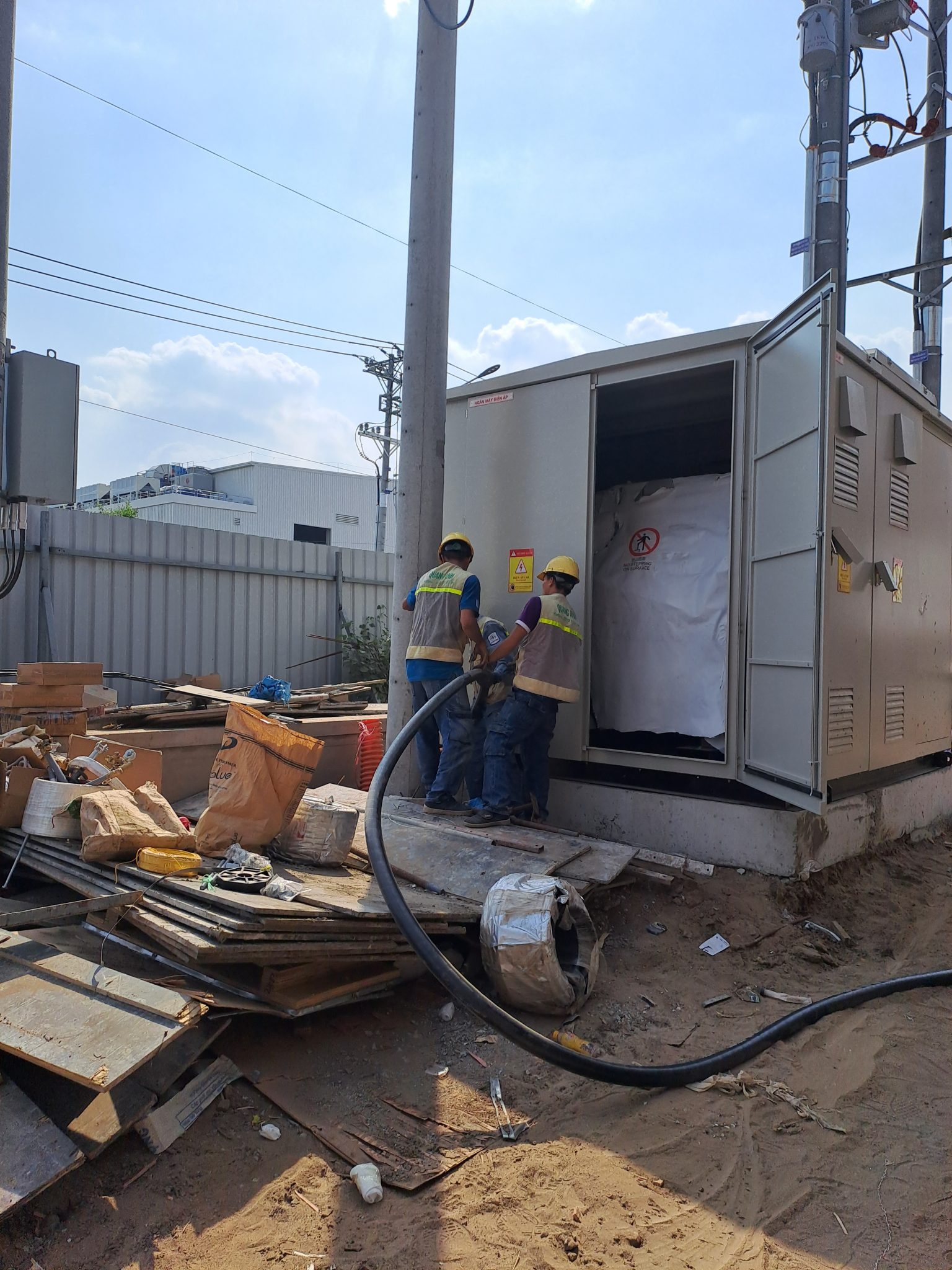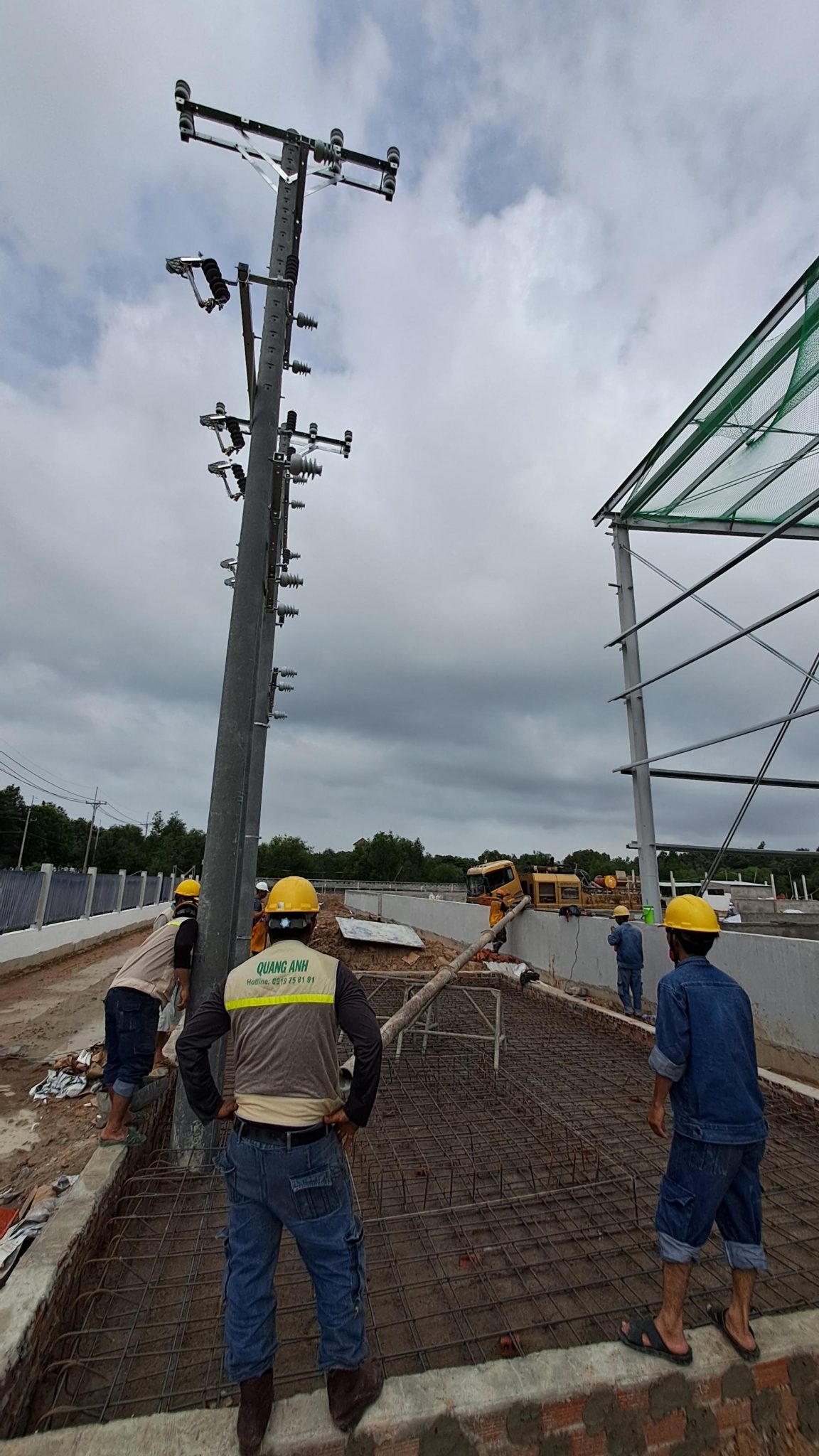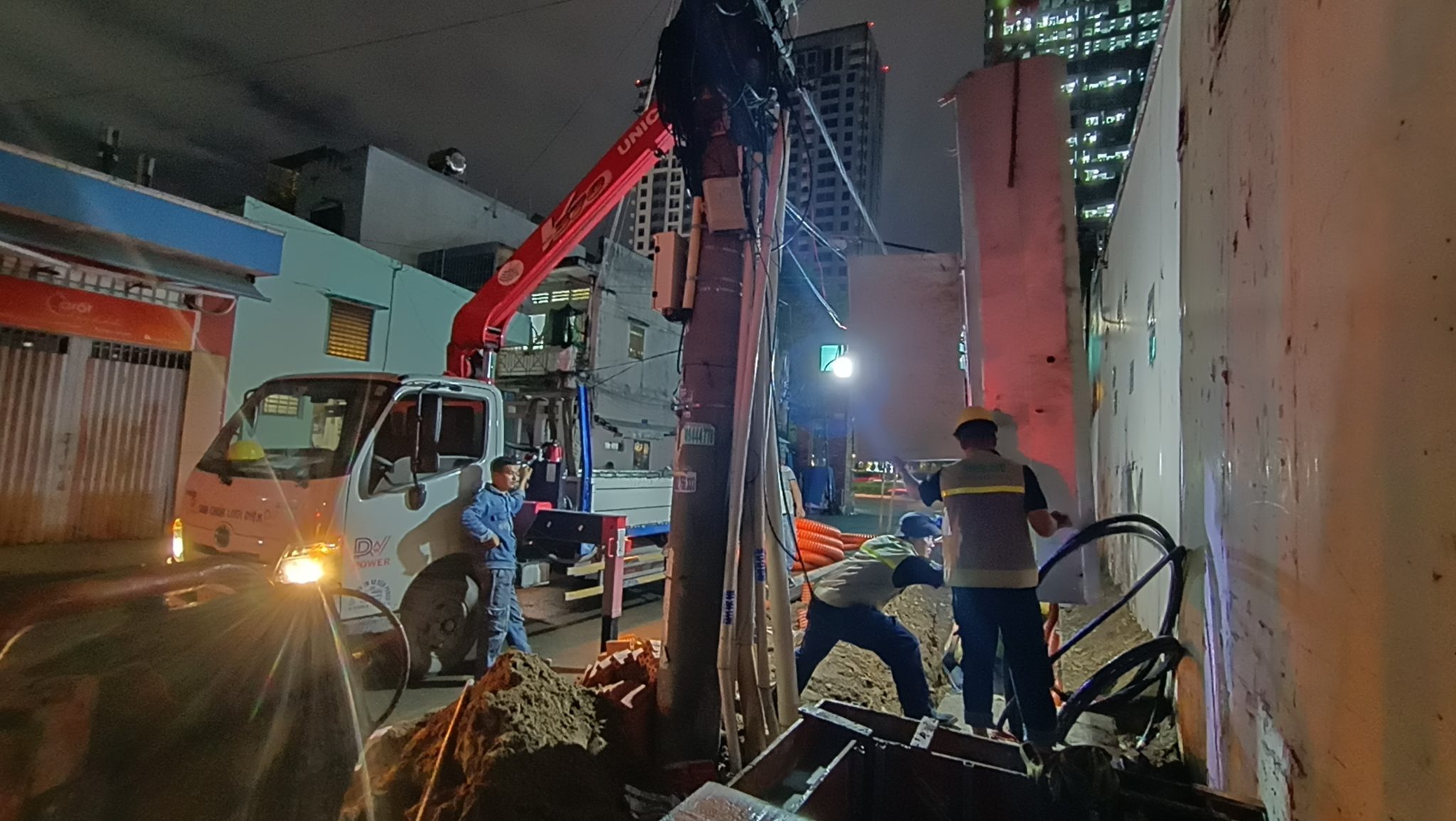News
Construction of Electric Vehicle Charging Stations: Procedures, Technical Requirements, and New Trends
The construction process of EV charging stations requires fulfilling legal requirements, detailed construction processes, and adhering to technical requirements. Clear understanding of new trends and risks is a crucial foundation for effective implementation.
Legal Procedures for EV Charging Stations
Constructing EV charging stations requires a building permit, including detailed technical drawings and land use certificates. The electrical system within the charging station must be safe, meeting fire safety standards. Registration with the electricity authority is necessary to ensure a stable power supply and compliance with technical standards regarding capacity and protection systems.
During the early stages of investing in an EV charging station, going through the legal procedures is a prerequisite to ensuring lawful and safe operations.
1. Business and Construction Permits
Initially, the business needs a license to operate in the electric charging sector, ensuring legal operation in the market. For large-scale charging stations, a construction permit is indispensable, especially when installing major equipment like those from Eaton or Schneider. In some cases, according to the amended Construction Law, a construction permit might be exempt if the design is not complex.
2. Electrical Safety and Fire Prevention (PCCC)
The charging station must have an electrical safety certification to minimize incident risks and ensure equipment like Mitsubishi operates stably. Although fire safety design review is not always required, these standards need to be strictly adhered to.
3. Electricity Supply Contracts and Environmental Protection
When signing an electricity supply contract with the power authority, businesses will ensure a stable power source. Registering for environmental protection is also an essential procedure to comply with current regulations.
4. Land Use Certificate
Land use rights must also be proven through legal documents, which is crucial in determining the construction site for the charging station.
5. Environmental and Social Impact Assessment
Environmental and social impact assessments may be additional requirements depending on the scale and location of the charging station, ensuring no negative impacts on the surrounding community.
Properly adhering to legal procedures not only ensures legality but is also a foundation for the sustainable development of EV charging stations.

Construction Process of EV Charging Stations
Surveying the demand to determine capacity, installation location, and electrical grid connectivity is the first step in constructing an EV charging station. Designing the system with technical drawings and selecting equipment that meets international standards is necessary. The installation phase requires secure connection with the power system and charging tests to ensure smooth operation.
Implementing the construction of EV charging stations requires meticulous attention from assessment to installation efforts to ensure optimal performance and safety. The process begins with identifying demand and technical requirements to understand the type of electric vehicle and the necessary amount of electrical energy. Thorough analysis helps make accurate decisions about capacity and compatible charging station type.
Next, site and electrical infrastructure assessments should be conducted thoroughly. Surveying the installation location not only ensures ease of access but also optimizes space usage. Additionally, checking the capacity and structure of existing electrical systems ensures that the electrical system is strong enough to support the charging station, avoiding unwanted overload issues.
After completing the assessment, the charging station system design will proceed. At this step, the selection of EV charging equipment such as AC or DC sockets should meet demand and international standards. System planning not only ensures safe operation but also optimizes energy use efficiency.
In the construction preparation phase, strong foundations and electrical infrastructure are essential elements. Building a sustainable foundation and an electrical system capable of providing stable power helps maintain long-term effective operations of the EV charging station.
The installation and inspection process needs to be performed carefully. Installing devices such as transformers and controllers should be completed meticulously, followed by comprehensive system checks to ensure smooth operation and compliance with all safety standards.
Safety is the top concern during the design and operation of the charging station. To ensure charging station safety, the system must be equipped with emergency power cut-off switches to ensure quick response in emergency situations. In addition, the station needs to be weather-resistant and withstand environmental impacts.
By focusing on each step in construction, from survey to charging system design and installation, the capability to create a safe, efficient, and sustainable EV charging station system is high.

Technical Requirements for EV Charging Stations
The construction of EV charging stations must ensure a minimum capacity from 7kW for slow charging to 22-350kW for fast charging. The system needs to support Type 1 and Type 2 connection standards, with overcurrent fuses and insulation meeting IP54 or higher standards.
To meet the development demands of the electric transportation sector currently and in the future, charging station standards need to strictly comply with technical regulations. EV charging stations must follow TCVN 13078-1:2020 (IEC 61851-1:2017), ensuring a general structure for a wired charging system for electric vehicles. Electromagnetic emission requirements (EMC) are essential, ensuring the charging station operates stably without causing electromagnetic interference to surrounding devices, as clearly specified in TCVN 13078-21-2:2020 (IEC) standards.
Additionally, a charging station must be compatible with the necessary voltage and power for current types of electric vehicles. This includes both AC and DC charging. Vehicle charging power must be meticulously calculated to optimize charging time and ensure user safety.
The safety protection system must be fully equipped with devices to prevent overload, overheating, lightning, and electrical leakage. These are mandatory criteria to ensure that users and vehicles are fully protected from dangerous situations.
The charging station must also ensure compatibility with international standards such as IEC 61851-1 to achieve high charging efficiency and minimize risks for devices and users. Moreover, standards like IP54 for device casing protection are important to ensure internal components are not affected by water and dust.
Lastly, according to national technical regulations, the HS code of the EV charging column is regulated as 85044090, which helps effectively manage and coordinate the import and installation of these electronic devices.

New Trends in the Field of EV Charging Stations
Some charging station providers are adopting a no-capital investment model, combining renewable energy to reduce grid load and improve sustainability. These trends mark a shift in the approach to designing and operating EV charging stations.
Breakthrough Charging Technology Development
In the context of sustainable development, LINK technology emerges as a breakthrough solution in EV charging station infrastructure. This technology allows flexible connection of many charging posts into an intelligent system, increasing power up to 180kW when combining three 60kW posts or 360kW with a 120kW post. This brings great benefits in shortening charging time for large electric vehicles like trucks and buses, while ensuring optimal power allocation according to each vehicle’s needs, helping optimize electricity consumption efficiency.
Expansion of Charging Station Infrastructure
Vietnam is witnessing the rapid expansion of charging station infrastructure. On a national scale, the government is promoting the green transportation infrastructure plan with specific policies implemented in legal documents. Moreover, public-private cooperation is being encouraged, with trends towards installing 2,000 to 5,000 new charging posts nationwide.
Focus on Electric Commercial Vehicles
Aiming to develop a green transport system, especially for electric commercial vehicles, high-power charging stations are being deployed to support types of electric trucks and buses. The emergence of LINK technology with fast charging capabilities up to 360kW significantly reduces waiting time for these types of vehicles.
Government Support Policies
To stimulate investment in charging infrastructure, the state has built a supportive legal framework, including tax incentives and technical support for public charging station projects. Thanks to this, businesses can easily access and implement projects related to EV charging stations.

Risks in Operating EV Charging Stations
Operating an EV charging station poses risks of electrical overload, connection errors, and standard violations leading to multiple dangers. Therefore, establishing a regular maintenance program and complying with technical standards is necessary to ensure safety and efficiency.
Managing and operating EV charging stations is not only limited to ensuring continuous energy supply but also faces many potential risks. Firstly, electricity safety and fire hazards are one of the main threats. Using non-genuine chargers or non-standard equipment might lead to voltage discrepancies causing short circuits or overheating, especially likely with lithium-ion batteries. The lack of automatic circuit breakers or operational errors such as overheating the battery during charging without control will increase the risk of fire.
To legally operate the charging station, compliance with legal and standard regulations is required, including ensuring the charging station is installed in assessed areas and equipped with certified safety equipment. This not only helps prevent legal violations but also protects the structural integrity of the project from unnecessary risks.
Efficiency and economics are also noticeable issues when it comes to managing EV charging stations. Lack of maintenance often leads to significant energy loss and increased operational costs. Furthermore, technical issues not timely addressed could lead to service disruptions, affecting reputation and significantly raising repair costs.
Risks from user behavior are also an element not to be overlooked. When users do not follow usage instructions such as overcharging, improper battery maintenance, or ignoring temperature warnings, the risk of damage or even battery fires is very high.
Solutions to minimize risks include applying advanced technical standards like IEC 61851 for charging station design, installing automatic temperature monitoring systems and smoke detectors. Additionally, training staff in technical maintenance and regular system checks for cables and connectors is very necessary. Moreover, using batteries with a Battery Management System (BMS) will help better control and prevent overcharging.

Constructing EV charging stations brings about benefits in technology, investment, and sustainable strategy. The combination of green technologies and revenue-sharing capabilities helps optimize exploitation and development effectiveness of the green transportation infrastructure.
Contact QuangAnhcons through Hotline: +84 9 1975 8191 for professional EV charging station construction and installation service.
QuangAnhcons provides comprehensive EV charging station construction services, from surveying to designing and deploying, ensuring compliance with current technical and legal standards.

 Tiếng Việt
Tiếng Việt 简体中文
简体中文 Deutsch
Deutsch 日本語
日本語 한국어
한국어 ไทย
ไทย Русский
Русский Français
Français
